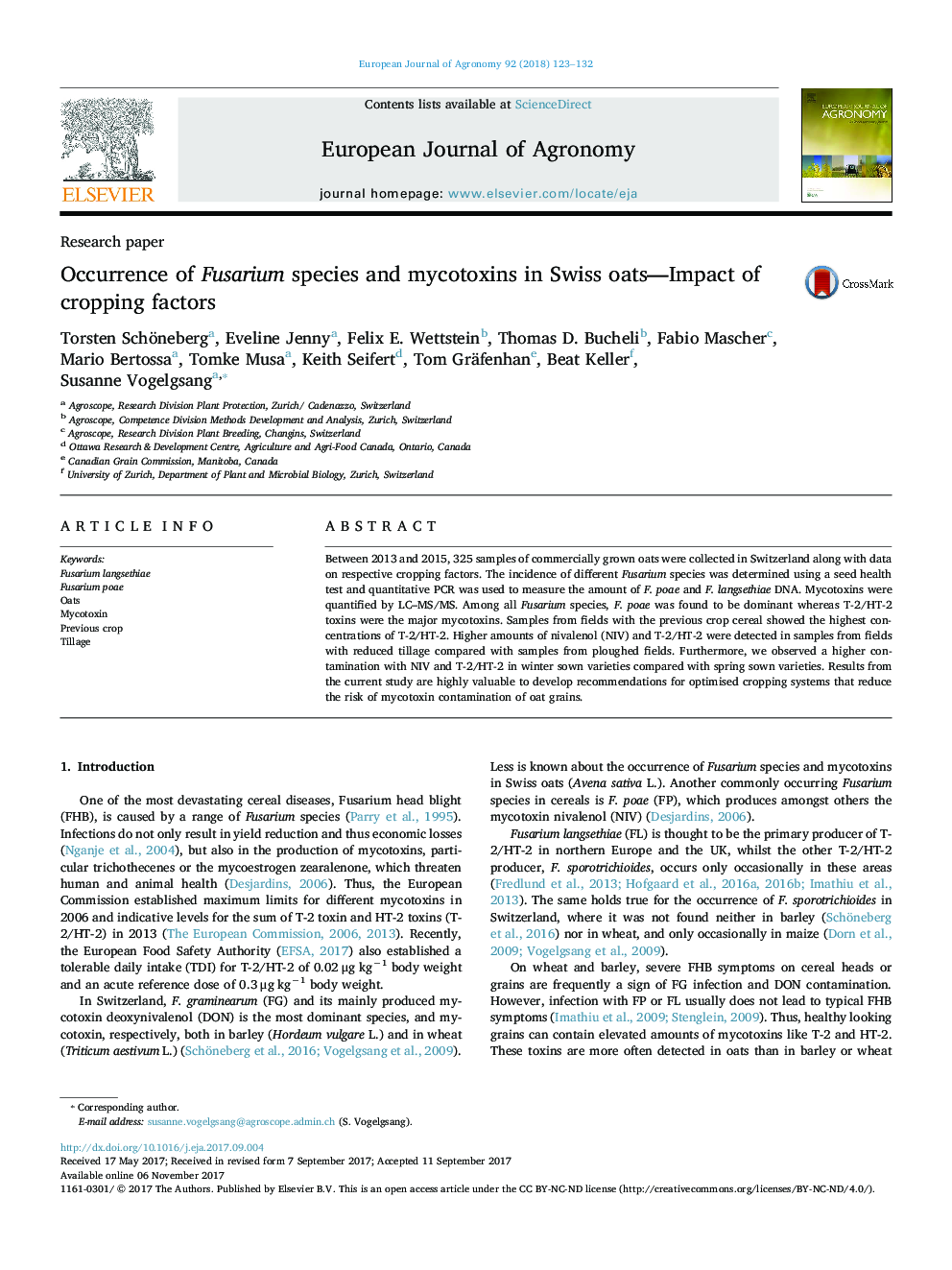| Article ID | Journal | Published Year | Pages | File Type |
|---|---|---|---|---|
| 8879030 | European Journal of Agronomy | 2018 | 10 Pages |
Abstract
Between 2013 and 2015, 325 samples of commercially grown oats were collected in Switzerland along with data on respective cropping factors. The incidence of different Fusarium species was determined using a seed health test and quantitative PCR was used to measure the amount of F. poae and F. langsethiae DNA. Mycotoxins were quantified by LC-MS/MS. Among all Fusarium species, F. poae was found to be dominant whereas T-2/HT-2 toxins were the major mycotoxins. Samples from fields with the previous crop cereal showed the highest concentrations of T-2/HT-2. Higher amounts of nivalenol (NIV) and T-2/HT-2 were detected in samples from fields with reduced tillage compared with samples from ploughed fields. Furthermore, we observed a higher contamination with NIV and T-2/HT-2 in winter sown varieties compared with spring sown varieties. Results from the current study are highly valuable to develop recommendations for optimised cropping systems that reduce the risk of mycotoxin contamination of oat grains.
Related Topics
Life Sciences
Agricultural and Biological Sciences
Agronomy and Crop Science
Authors
Torsten Schöneberg, Eveline Jenny, Felix E. Wettstein, Thomas D. Bucheli, Fabio Mascher, Mario Bertossa, Tomke Musa, Keith Seifert, Tom Gräfenhan, Beat Keller, Susanne Vogelgsang,
